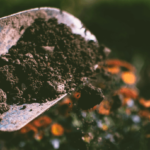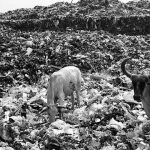And what is that scent after an early Summer rain? Short answer: the scientists call it Petrichor. The internet definition: a pleasant smell that frequently accompanies the first rain after a long period of warm, dry weather….and there’s a much more interesting, albeit a bit longer, answer. Rain is one of the most beautiful, and… [Read More]
The Lowdown On Good Topsoil
Saturday morning and it’s off to the garden center for topsoil to get the planting started. Go ahead, pick out a likely bag from the selection. After all, you’re a gardener and you know your dirt. In grabbing a handful of topsoil, what sort of rating process do you apply? For example, does it look… [Read More]
Water, Water Everywhere … But Where And For How Long?
(In an article authored by NASA’s Earth Science News Team, I was struck by the conclusion of Ben Cook, a researcher at NASA’s Goddard Institute for Space Studies and Columbia University. “Climate change is not just a future problem,” he said. “It’s already affecting global patterns of drought, hydro climate, trends, variability. And we expect… [Read More]
Next Time You See A Dairy Herd, Think Milk, Butter And Energy
When we look at a field of dairy cows chowing down on alfalfa and clover, think of all the milk products they give us — butter, cream, ice cream and ingredients for our favorite chocolate bars, to name some. But their diets of all that roughage produces a totally unexpected cash crop: manure. Today’s dairy… [Read More]
Should You Mix Garbage With Your Trash?
Why not? Egg shells, banana peels and leftovers are biodegradable, so they’ll just go into the landfill and decompose, right? Probably not. Are you aware that because of federal regulation landfills are equipped with liners to prevent any food scraps from touching the soil? So instead it decomposes, releasing methane gasses that municipalities recapture as… [Read More]
- « Previous Page
- 1
- …
- 9
- 10
- 11
- 12
- 13
- …
- 18
- Next Page »








